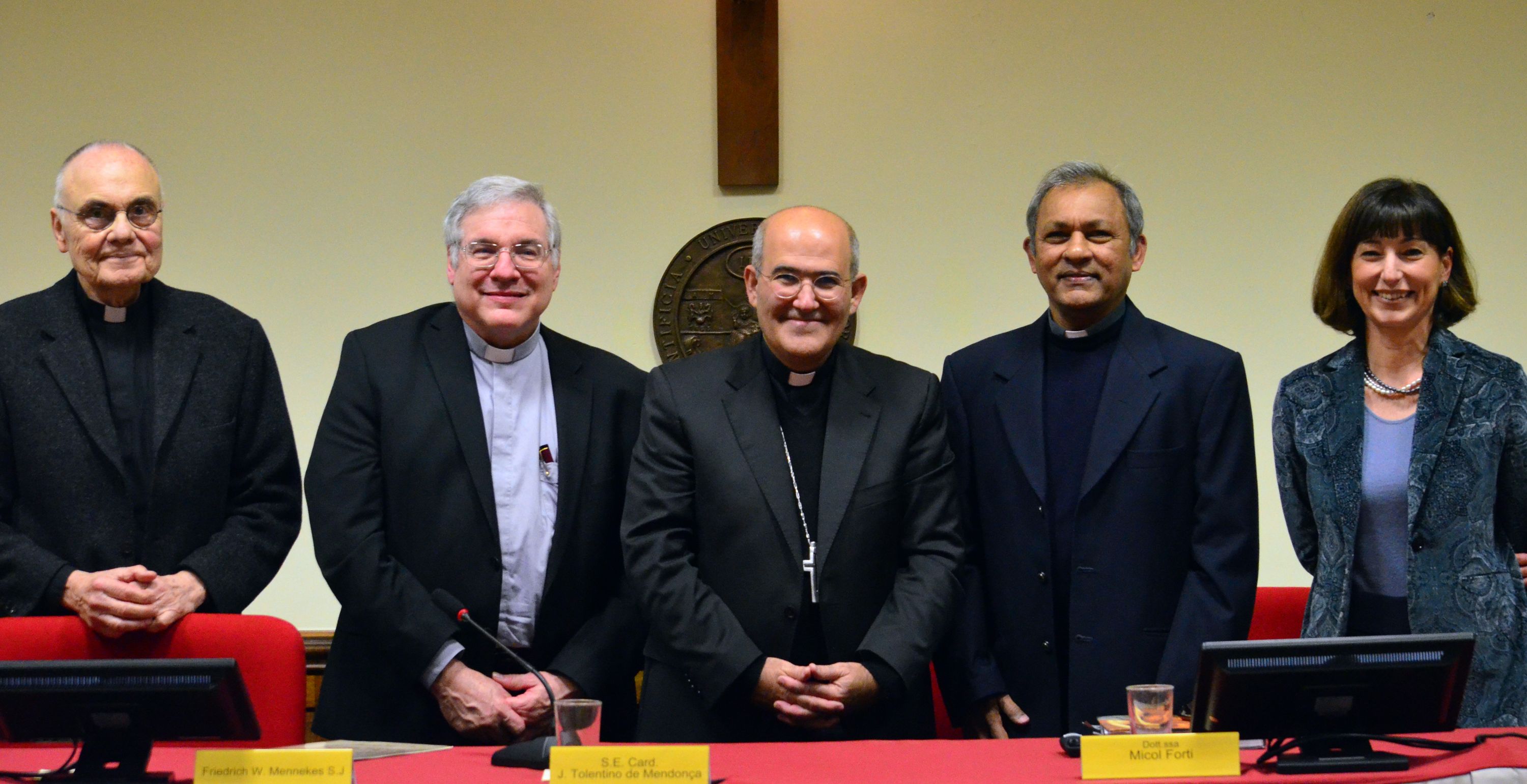- Home
- La Gregoriana
- 62 - Building the Future
- New paradigms to give renewed impetus to critical thinking
Share:

To rethink the study of the history and cultural heritage of the Church,
considering that, while it is true that “all roads lead to Rome”,
it has also been enriched by its openness to the rest of the world,
giving fully in return. A transdisciplinary and inclusive
approach is the antidote to self-referentiality.
“I was born in Mozambique, where I grew up. I then pursued religious and secular studies in different parts of India. I am now living in Europe, gaining a rich experience in yet another continent.” These were the introductory remarks of Father Vitor Délio Jacinto de Mendonça, S.J., appointed new Dean of the Faculty of History and Cultural Heritage of the Church on February 20, 2023, succeeding Father Marek Inglot, S.J. The most immediate question is how the study of the History and Cultural Heritage of the Church is experienced in a cultural context different from the European one, which has overwhelmingly shaped these disciplines. “In India, where Christianity accounts for less than 3% of the total population, the study of the history and cultural heritage of the Church is rather marginal. Nevertheless, the history of the Church in India is studied in its context of social, cultural and religious diversity, i.e., in a setting of philosophical and theological pluralism. The advantage of studying the history and cultural heritage of the Church from this perspective is that it avoids the dangers of self-referentiality and the comparative poverty of that history.”
“All roads lead to Rome”, the saying goes. How does the experience of students from non-European continents enrich the Faculty in terms of the history and cultural heritage of the Church? Are they trained to address the challenges that arise in places where the Church is younger?
“This saying is set in the context of the history of the Roman Empire and of Christianity, when Rome was considered the centre of the world. It is also true that all these roads leading to Rome have a beginning and an end outside of Rome, should we choose to use it as a metaphor for today. Indeed, Rome has been enriched also by its openness to the world. The Faculty’s students have come from many different countries and cultural backgrounds. They contribute a wealth of knowledge that should be recognised. After completing their studies at the Gregoriana, they will bring a new and enriched experience back to their home countries. This, of course, requires some effort. I would like the Faculty of History and Cultural Heritage of the Church to discover that there are other paradigms and other ways.”

The Apostolic Constitution Veritatis Gaudium warns ecclesiastical faculties and universities against the risks of self-referentiality. Does the Faculty, which has a large number of lay students, address these aspects?
“Insufficient openness to the world and to universalism, a limited willingness to listen and to think critically, inevitably leads to self-referentiality as an expression of superiority. It deceives us into believing that we are the reason for the world, that we are the world. It is the broader path that ultimately leads to our political and cultural irrelevance to society. Conversely, the narrow albeit stable path is an inclusive, transdisciplinary academic approach, receptive and open to all questions. Priests should listen more to their lay colleagues, with a creative spirit.”
You recently wrote a book on the Indian painter Angelo da Fonseca (1902-‘67), where you apply not only the categories of aesthetics, but also those of mission, inculturation and also protest. In your opinion, should the political and social dimension of cultural heritage be given greater prominence?
“It certainly cannot be ignored. There is no art without ideology, no form of art that is not political. All forms of art support a given political and social system. A given social system gives rise to a certain artistic expression, which in turn supports it. But since art is also a reflection of society, and not everything in society is beautiful and just, art is also a form of protest that transcends the idea of beauty and of aesthetic and formal classifications. I would like the Cultural Heritage Department of our Faculty to teach our students that art allows us to dream, to think like the prophets, and never to forget the poor – paraphrasing Pope Francis’ recent words to artists. The Fonseca book develops these ideas, among others.”
Until 2005, the name of the Faculty referred to “Ecclesiastical History”, it was later changed to “History of the Church.” To what extent is the grassroots of the Church - the People of God - given a voice in the teaching of its history?
“I think that the change in the name of the Faculty has marked a turning point both in terms of content and in the teaching of the history of the Church, overcoming the traditional perspective that sees Church hierarchy and religious orders as the only actors in history. According to the new approach, Christians are protagonists of their own history and builders of the same Church, not above but part of history. It paved the way for the scientific study of the cultural heritage of the Church. This approach shows that Church history is not an adjunct to theology, it requires autonomy and an independent methodology. The Church is studied as a social, cultural and political institution that is both ‘in’ and ‘of’ the world. Thus, in addition to the Church’s inherent spiritual dimension, its cultural heritage can be studied as the expression of a specific political and cultural system. I’m not sure that this was already implicit in the Faculty’s name change in 2005, but ultimately history is also interpretation.”


